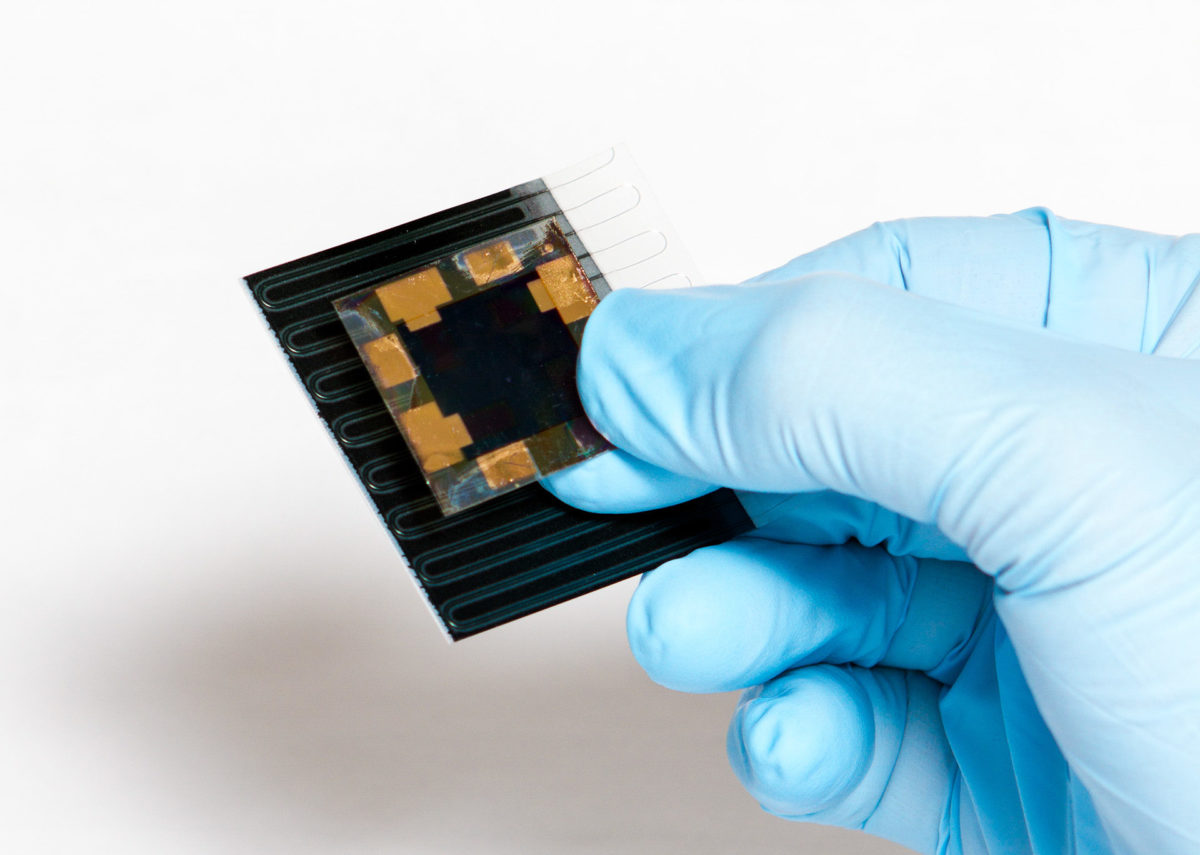Two leading players in the development of thin film PV technology have joined forces to produce a flexible CIGS/perovskite tandem cell measured at 23% efficiency.
The cell comprised a CIGS bottom layer deposited on a stainless steel foil substrate using a sputtering process – similar to that with which Miasolé achieved 17.44% efficiency on a larger, 1.08m² flexible CIGS module.
The perovskite cell was deposited onto a transparent and flexible substrate and tuned to absorb maximum visible light whilst remaining transparent to infrared light, which could be better converted by the CIGS cell underneath. The latest achievement represents a 1.5% improvement on the companies’ previous effort, which hit 21.5% efficiency in January.
Complementary attributes
Popular content
Both institutes have spoken of the potential for the technologies to complement each other. Sjoerd Venstra, program manager for perovskite-based solar cells at Solliance said the achievement demonstrates how perovskites can improve the performance of more established technologies such as CIGS.
Miasolé director of technology Dmitry Poplavskyy, meanwhile, said the achievement underlined the adaptability of the company’s CIGS roll-to-cell manufacturing process. “This significant tandem cell performance gain was achieved through process improvements in the bottom CIGS cell”, he said in a statement. “These process changes, implemented by MiaSolé, enable high efficiency CIGS cells with [a] spectral response better matched to the top perovskite cell. Further improvements in spectral matching, as well as overall higher CIGS cell efficiency, are expected to push the tandem architecture well beyond 23%.”
The announcement came in the same week scientists at the Helmholtz Zentrum Berlin also surpassed 23% efficiency, with a 1cm² perovskite/CIGS tandem cell on a rigid substrate. That landmark brought tandem technology within reach of the 23.35% record efficiency for a standalone CIGS cell, the point where the combined technologies could start to generate commercial interest.
This content is protected by copyright and may not be reused. If you want to cooperate with us and would like to reuse some of our content, please contact: editors@pv-magazine.com.



“The latest achievement represents a 1.5% improvement on the companies’ previous effort, which hit 21.5% efficiency in January.”
The metric is ambiguous. An increase from 21.5% to 23% is a 7% relative improvement. Progress in PV efficiency is faster than it looks at first sight.
A good point James – thanks for keeping me on my toes.
Dear Mark, Thanks for reporting so quickly on new PV achievements.
This new result is a 4-terminal device – are there any estimations whether 4-terminal cells will ever be of industrial interest as compared to 2-terminal solar cells (like the HZB cell you mentioned)?
Hi, thanks for the comment – good question! To my knowledge most of the tandem cells moving further toward commercialization are 2 terminal. There is plenty of interest on the research side in the 4 terminal set up though, and I’d say some of the leading institutes think it could work commercially. But I think it’s more complex at the system level, you need a different set up to the inverter and more MPPTs for it to work well. The guys at Imec or Solliance could probably give a better explanation than me if you’re after more information.